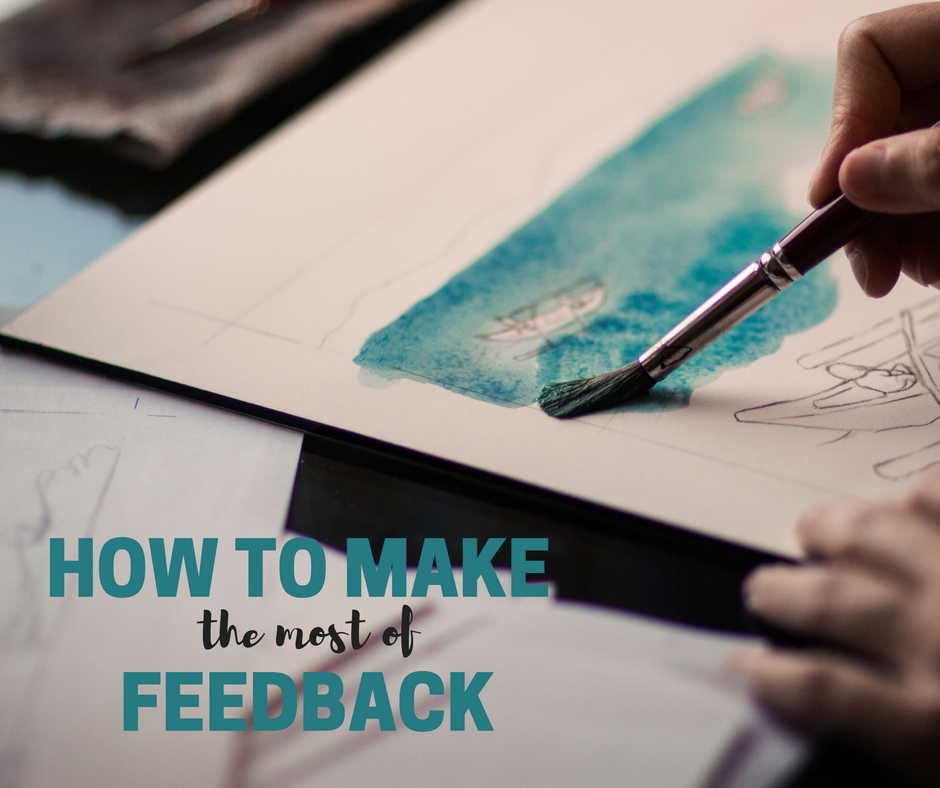
In order to make the most of feedback, you must be a strong translator.
Why?
Feedback doesn’t come gift-wrapped with a solution.
In fact, feedback generally points out holes, problems or weaknesses. As the creator, your job is to not panic, to hear past the comments, and to identify the true problem that’s being raised.
Take this scenario, for instance:
Meg signs up for a critique with an editor for the first ten pages of her manuscript. The editor has read the pages and sits down with Meg to discuss them.
Editor: I love the premise in this story, and in particular, am drawn to your main character, Frankie.
Meg: Thank you!
Editor: I don’t think the dog works, though. He’s sweet, but I don’t know. I think I’d rather focus on Frankie.
Meg: Ummm… (she’s completely baffled, because the dog is essential to the entire plot)
Editor: (nodding, warming up to her idea) Yep. I think if you took the dog out, we’d connect with Frankie more quickly.
As the conversation wraps up, Meg tries to hear the rest of what the editor says, but she’s stumped. All she can think is that her story doesn’t work. If she takes out the dog, the story doesn’t have a plot. So, maybe she should just start over with a new idea. This kind of scenario happens far too often.
As creators, we can be too literal about the feedback we receive.
We take a comment such as “I don’t think the dog works,” to mean that we need to remove the dog. If we take a look at the conversation though, looking at it as a translator might, we can see that something deeper is happening. The editor has pointed out that she likes Frankie, and that the dog is a distraction. She has said, “I’d rather focus on Frankie” and “If you took the dog out, we’d connect with Frankie more quickly.” Maybe the problem isn’t the dog, exactly, but the way the dog is pulling the reader’s focus in the first ten pages. Maybe the dog needs to be a little less compelling. Maybe we need some time to get to know Frankie before we meet this super-star dog.
When we receive feedback, we must identify the underlying question.
In this case, the question “how can I remove the dog” leads to a complete unraveling of the plot. But the question, “how can I tone down the dog in the first few pages so the reader can focus on Frankie,” is productive and absolutely solvable.
When your ego is on the line, it’s easy to spiral into a tailspin. We freak out, and jump to worst-case scenarios. Our work has a flaw, and we have no idea how to solve it. We should toss it out and start over. Or, worse, we should stop believing we can create at all. Who are we to think we’re a (fill in the blank).
Becoming a translator takes practice. The same is true for learning how to translate feedback. The good news is that there are simple steps to the process. We can practice these steps ahead of time when our egos are not on the line. That way, when we are ready to seek out feedback, we can make the most of it.
Here are five steps for making the most of feedback.
- Write down what the person says. Write down the good, the bad, and the in-between. Try to capture as many words as you can.
- Ask clarifying questions if you don’t understand something that was said, but avoid defending your work. You need time to process what has been said, and the person offering feedback doesn’t expect an answer on the spot. Thank the person for his or her time and insight.
- Find a quiet space and read over your notes. Don’t trust your memory. You’ll over-emphasize the drama. The key to translation is reviewing everything that was said.
- Look for clues as to the reason why certain advice was given. You were told to “get rid of the dog,” but what were the supporting reasons? What issue do those reasons point out?
- Frame a question that highlights the issue to solve, and then brainstorm workable solutions that deal with the heart of the problem.
What kinds of projects are you working on? How might feedback help you? What thinking challenges can you give yourself to practice these five steps? Build up your translation skills through a few low-risk practice sessions, and then try asking for real feedback to see how you do.
Remember, learning to be a translator is a skill. Expect a learning curve. Motivate yourself to push through the tough parts by focusing the benefits. If you can alchemize feedback into useful revision, you can take your work to the next level. Challenge yourself. The results are worth the effort.

